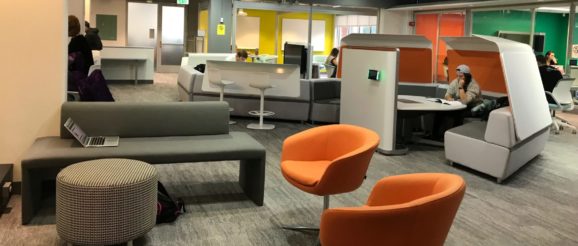Learning, Design, And Technology Department Brings Innovation To College Of Education

As the College of Education continues to renovate its classrooms with innovative technology and new teaching methods, it’s also making cutting-edge changes to its departments’ curricula. In Learning, Design, and Technology, the College is offering students unique experiences that will leave impacts both in and out of the classroom.
The LDT program currently only offers advanced degrees, but undergraduate students are still able to take classes in the department to fulfill certain gen-ed requirements.
One of the most popular classes in the LDT program (LDT 100: World Technologies in Learning) explores the influence of different means of technology, design, and media both internationally and in the classroom. What started out with a small group of students just five years ago, has become one of the College’s most popular courses.
“We had a very small group of students taking it, but it became a gen-ed or an elective about two years ago,” LDT professor in-charge, Dr. Priya Sharma said. “That’s when we were able to approach the college advising office and say, ‘Hey this might be a course that could be useful or interesting for education majors.’”
One of the most unique parts about the learning, design, and technology program is that all of the faculty come from diverse backgrounds. Some professors have spent decades doing research, while others have spent years in the classroom.
“The name learning, design, and technology is sort of like a triangle,” Sharma said. “Some faculty tend to focus more on technology, some more on learning, and some more on design. We all do research and or teach around those ideas.”
Having professors from such varied backgrounds means the program is really beneficial for students in the College. Their professors have lived through many of the changes in the educational world and have spent countless amounts of time interacting with students and changing their lives.
“Many of our faculty have come from a teaching background so they understand where the field is going, and they also understand what the challenges and opportunities are for students now who are looking to go into education,” Sharma said.
Students in the LDT program are able to regularly work with 3D printing machines, virtual reality sets, and even robots. In fact, LDT 100 students have the opportunity to interact with Pepper the robot — a semi-humanoid robot that has the ability to read, talk, and sense emotions.

The LDT program, although limited to smaller class sizes, is rapidly growing. That’s why LDT 100 is often one of the first classes advisors will recommend to students at New Student Orientation.
In a continually digitalized and modern world, the benefits that students can learn from a program like this can last a lifetime. Besides, who doesn’t love getting to play with toys and robots for a gen-ed requirement?
